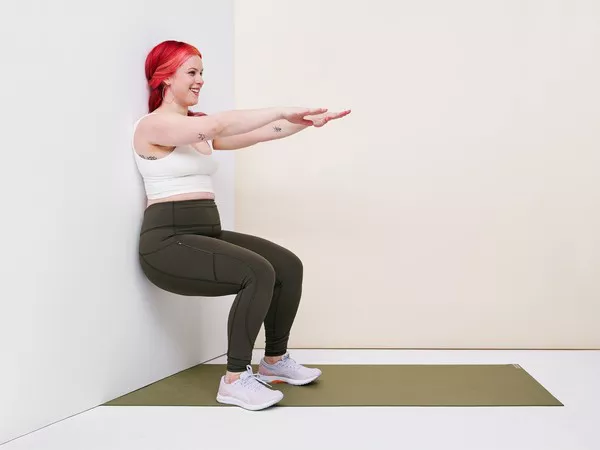Ice has long been used in various cultures for its cooling, soothing effects, and it is increasingly becoming a go-to skincare tool for many people. The benefits of using ice on your face include reducing inflammation, minimizing puffiness, tightening pores, and even calming skin irritation. While it is a simple practice, it is important to understand when and how to use ice properly in your skincare routine. Using ice at the right times, and in the right way, can help you achieve glowing, smooth, and healthy-looking skin. However, improper use or overuse can lead to adverse effects. In this article, we will explore the best times to incorporate ice into your skincare routine to reap the most benefits and enhance your complexion.
the Benefits of Ice in Skincare
Using ice in skincare offers a wide range of benefits that can greatly improve your skin’s health and appearance. One of the primary advantages is its ability to reduce inflammation and puffiness. Whether from lack of sleep, allergic reactions, or overexposure to sun, ice can calm your skin and make it look more refreshed. The cooling effect also helps tighten the skin, reducing the size of pores and giving the skin a smoother, more even texture. In addition to reducing puffiness, ice can also promote circulation and blood flow, which in turn helps with collagen production and skin rejuvenation. When used correctly, ice provides instant relief, and its benefits can last for a long time, leaving you with a brighter, clearer complexion.
The Best Time to Use Ice for Morning Puffiness
Many people wake up with puffiness or swelling, particularly around the eyes or the face. Morning puffiness is a common problem, caused by fluid buildup during the night, sleeping in an unfavorable position, or simply due to a lack of sleep. Applying ice to your face first thing in the morning can help combat this issue. Ice constricts blood vessels, limiting the flow of fluids to the area, which reduces swelling. By gently applying ice around the eyes and on areas that feel swollen, you can noticeably reduce puffiness, making you look more awake and refreshed. A few minutes of ice application can significantly minimize morning puffiness, giving your skin a brighter and more energized appearance.
You should wrap the ice in a soft cloth before applying it to your skin. This not only helps protect your skin from the direct cold but also allows for a more comfortable application. Gently press the wrapped ice over the puffed areas, and leave it there for a couple of minutes. For more effective results, you can also rotate the ice around your face in a circular motion to further stimulate circulation and relieve tension. It is important to avoid overusing ice in the morning; limit your application to around 1–2 minutes to prevent skin damage from excessive cold exposure.
When to Use Ice After Cleansing to Tighten Pores
After you cleanse your face, your pores are open and more vulnerable to dirt, bacteria, and oil. This is the perfect time to apply ice to tighten your pores and prevent them from getting clogged. Ice constricts the blood vessels and tightens the skin, closing the pores and reducing their visibility. This step is particularly beneficial for those with oily or acne-prone skin, as it minimizes the chances of pore blockages that can lead to blackheads or breakouts.
To use ice effectively after cleansing, simply wrap an ice cube in a cloth or use an ice pack, and gently massage it over your skin. Focus on areas where your pores are more noticeable, such as around the nose and on your forehead or chin. The cold will instantly tighten your skin and close your pores, ensuring that they stay clear and clean throughout the day. This step should be quick—about 1 to 2 minutes—so as not to overwhelm the skin with cold exposure.
Applying Ice After Sun Exposure to Soothe Skin
Sunburn is one of the most common reasons people turn to ice for skincare. Prolonged exposure to the sun can lead to redness, inflammation, and irritation, leaving your skin feeling hot and sensitive. Applying ice after sun exposure helps cool the skin and reduces the discomfort caused by sunburn. The cold sensation of ice calms the inflamed areas, while constricting blood vessels helps reduce redness and swelling. Using ice on sunburned skin can provide immediate relief and help prevent further irritation.
However, it’s crucial to apply ice gently on sunburned skin. Avoid placing ice directly on the burn, as this can worsen the damage or cause further irritation. Always wrap the ice in a soft cloth, and apply it in gentle circular motions. Use the ice for a few minutes at a time, taking breaks between applications to allow your skin to recover. If the sunburn is severe or blisters are present, it is essential to consult a healthcare professional for advice on treatment.
Using Ice for Acne and Skin Inflammation
Acne and skin inflammation can be incredibly frustrating to deal with, but ice can provide relief for inflamed acne and other skin irritations. Applying ice directly to acne lesions can help reduce swelling, redness, and pain. The cold constricts the blood vessels in the affected area, reducing blood flow and thus reducing inflammation. Ice can also help numb the area, providing temporary pain relief for tender pimples or blemishes.
To use ice for acne, simply wrap an ice cube in a cloth and apply it directly to the inflamed area. Hold it in place for 1 to 2 minutes, moving the ice around the pimple or acne spot to reduce swelling and redness. For larger breakouts, you can apply ice to the entire affected area to reduce overall inflammation. Keep in mind that while ice can help soothe and calm the skin, it should be used as a complementary treatment to your regular acne care routine.
When to Use Ice for Relaxation and Stress Relief
In addition to its physical benefits, ice can also have a relaxing effect on your skin and overall mood. The cooling sensation of ice on the face can help reduce stress and relieve tension. If you’ve had a long, tiring day or are feeling anxious, using ice on your face can help calm your nerves. The cold reduces the production of cortisol, the stress hormone, which in turn makes you feel more relaxed.
For a calming effect, you can apply ice in the evening after a long day. Gently press an ice pack or wrapped ice over your forehead, cheeks, and chin for a few minutes to help release built-up tension in your face. This can also help soothe your skin and prepare you for a restful night’s sleep. Ice is a great way to wind down and signal to your body that it’s time to relax.
How to Safely Apply Ice to Your Face
While ice is an effective tool for skincare, it’s important to use it correctly to avoid potential harm. Never apply ice directly to your skin, as the extreme cold can cause frostbite or irritation. Always wrap the ice in a soft cloth or paper towel to act as a barrier between the ice and your skin. This helps prevent the skin from direct exposure to the cold, making the treatment safer and more comfortable.
Additionally, limit your ice application to short periods—typically 1 to 2 minutes per area of your face. Prolonged exposure to cold can damage your skin and lead to discomfort. If you experience any numbness or redness, stop the ice treatment immediately. Always allow your skin to return to a normal temperature before applying ice again.
Conclusion
Using ice on your face can be an incredibly beneficial practice in your skincare routine. It offers a wide range of advantages, from reducing puffiness and soothing inflammation to tightening pores and improving circulation. By applying ice at the right times, such as after cleansing, in the morning to reduce puffiness, or after sun exposure, you can enhance your skin’s health and appearance. However, it is important to use ice safely, wrapping it in a cloth and limiting exposure to short intervals. Incorporating ice into your skincare routine the right way can lead to smoother, clearer, and more refreshed skin.
Related Topics






























